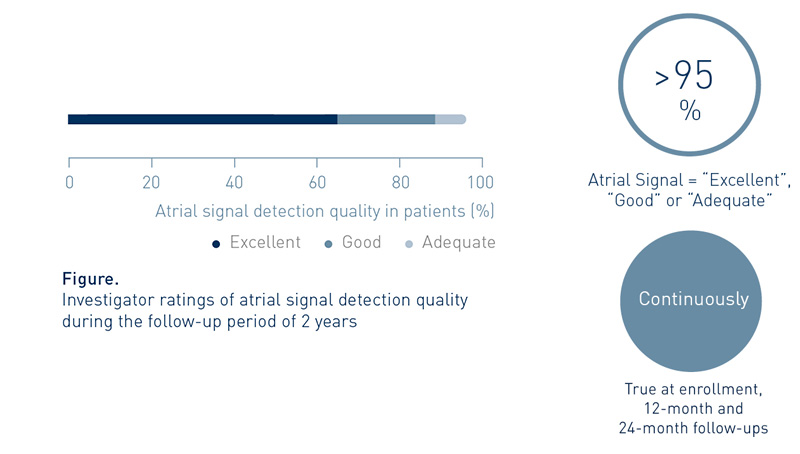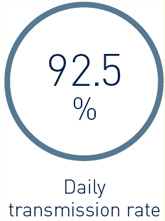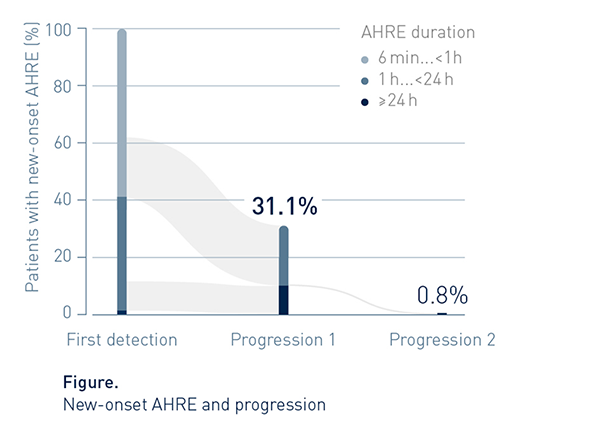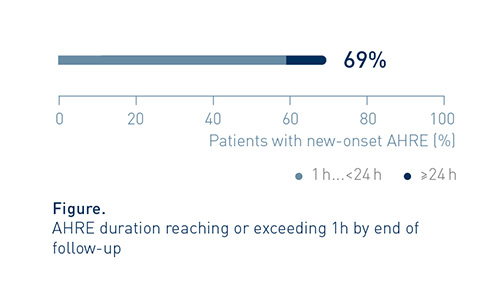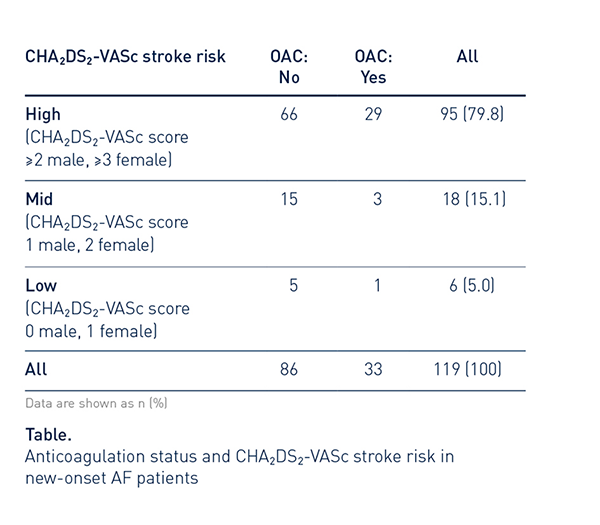Key Results
Key Result 1
Highly Accurate AHRE Detection
Adjudication of Device-Detected AHRE Shows High Positive Predictive Value
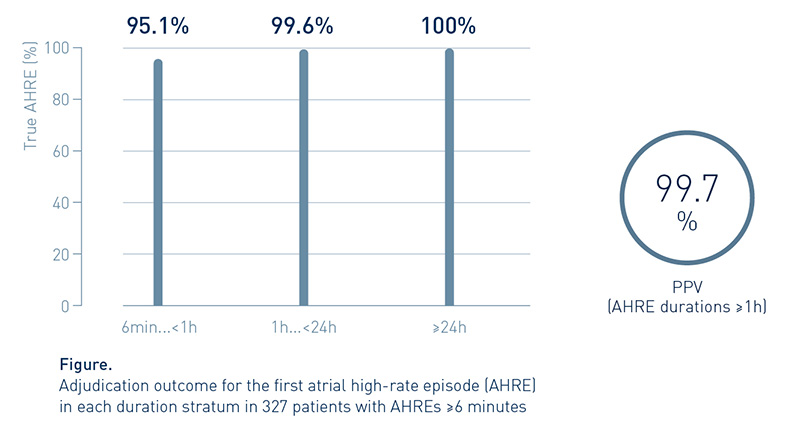
Analyzing the detection accuracy of DX-ICD systems for different AHRE durations, the first occurring AHRE per duration stratum was adjudicated, revealing a positive predictive value (PPV) of >99.7% for AHRE durations ≥1h.
Investigators Value the System’s Atrial Signal Detection Quality
